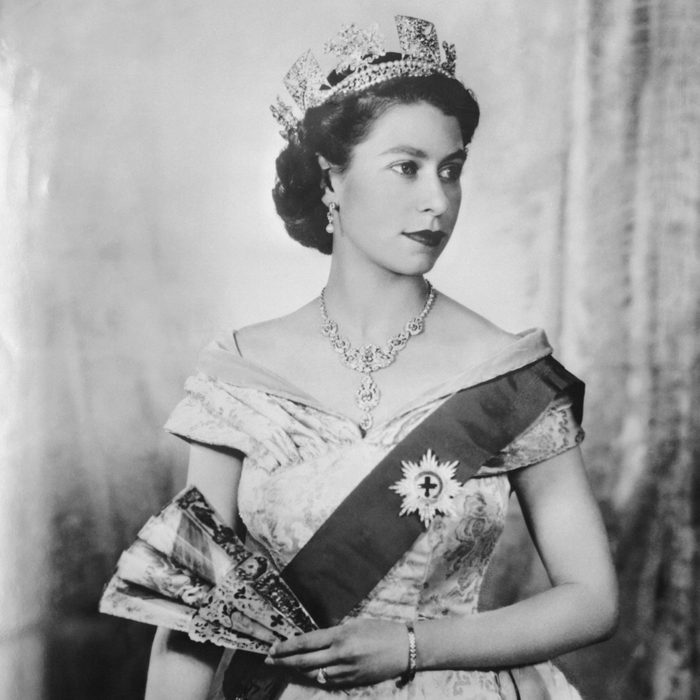
A look back at Queen Elizabeth’s coronation
As King Charles’s coronation approaches, it’s the perfect time for a trip down memory lane. The last time a monarch was crowned in the U.K., it was 1953, and the world was a very different place. It was also really the first time most Americans got a glimpse of the monarchy’s grandeur, since Queen Elizabeth’s coronation was the first royal ceremony ever to be televised. And it was quite the event, with England’s crown jewels and lavish wealth on full display, more than 8,000 invited guests and thousands of British citizens flooding the streets in celebration.
Of course, more than 70 years have passed since then, and King Charles also has a more reined-in view of the monarchy. As a result, there will definitely be some changes to the coronation proceedings, says royal expert Marlene Koenig. On the other hand, British coronations follow a format designed nine centuries ago, so a lot will be surprisingly similar.
We rounded up some stunning pictures of young queen Elizabeth at her coronation that will highlight both those similarities and probable differences. But most of all, you’ll love seeing Queen Elizabeth’s stunning and highly symbolic outfits, figuring out what’s really going on from her body language and spying other members of the British royal family tree, including a preschool-aged Charles!
Get Reader’s Digest’s Read Up newsletter for more royal insights, humor, cleaning, travel, tech and fun facts all week long.
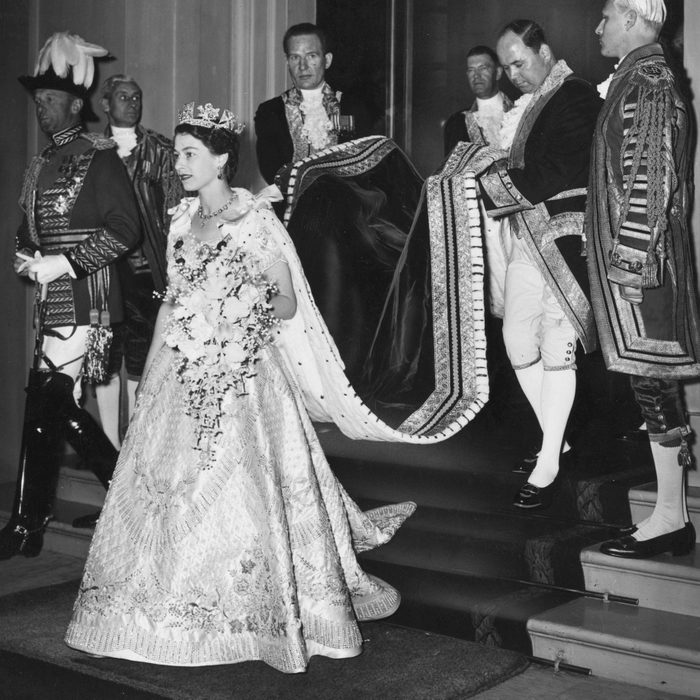
The queen’s coronation dress
In this photo, which was taken as 25-year-old Queen Elizabeth was leaving Buckingham Palace for the pre-coronation ceremonies, we get a good view of the incredibly intricate coronation dress. The work of British designer Norman Hartnell, it was made of white satin and embroidered with the emblems of the U.K. and all the Commonwealth nations. Her bouquet featured English orchids, Scottish stephanotis, Welsh orchids and carnations from Northern Ireland and the Isle of Man.
Fashion aside, however, this photo reflects something on a deeper level, according to royal expert Nicoletta Gullace, associate professor of British History at the University of New Hampshire. It demonstrates the use of “antique court costume” as a way of symbolizing the profound nature of the coronation rite. King Charles’s coronation on May 6, 2023, is expected to honor tradition while also making a statement about the role he feels the British monarch should be playing in the modern age.
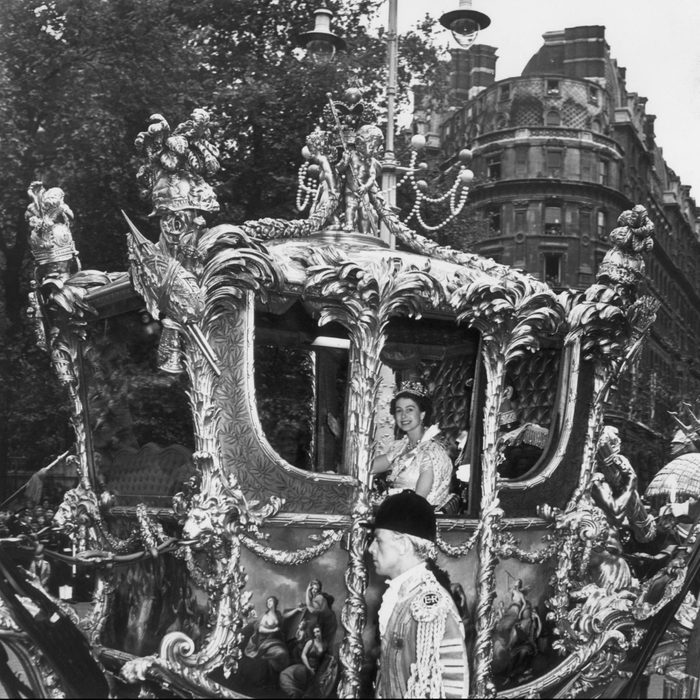
The journey to Westminster Abbey
For her pre-coronation journey from Buckingham Palace to Westminster Abbey, Queen Elizabeth II took the ornate horse-drawn Gold State Coach, which truly looks like something out of a fairy tale. Built in 1762 during the reign of George III, it has transported every monarch to their coronation since George IV in 1821. Nevertheless, King Charles is expected to break with tradition by traveling to his coronation in a different, and likely more modern, vehicle.
Although Elizabeth wears the George IV State Diadem in this photo, her actual “coronation crown” was a replica of St. Edward’s Crown. (The original was lost to history when Oliver Cromwell overthrew the monarchy in 1649, according to Koenig.) Solid gold and weighing nearly five pounds, St. Edward’s Crown is the centerpiece of the British crown jewels. Although it’s considered the traditional coronation crown, Koenig tells us only six monarchs have actually worn it as such. Charles is expected to be the next.
Westminster Abbey, by the way, has been the site of many royal events, from Prince William and Kate Middleton’s wedding to Queen Elizabeth’s funeral.
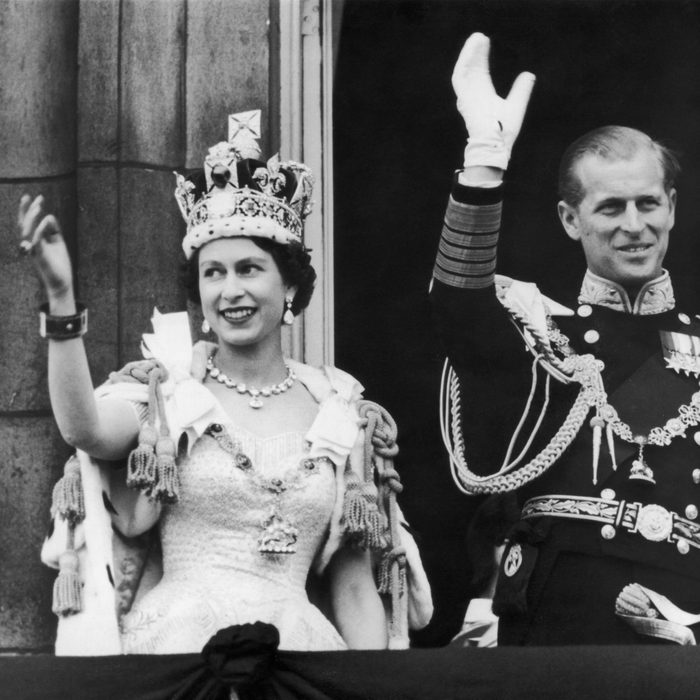
Ceremonial attire during the balcony wave
The coronation of a British monarch involves donning various ceremonial robes and shrouds. For a king’s coronation, the traditional attire worn underneath is a gown or tunic. Although Prince Philip was significantly involved in Queen Elizabeth’s coronation, he was not crowned, nor was he king. Because of that, it wasn’t surprising that he wore his full-dress naval attire, as shown here, post-coronation, on the Buckingham Palace balcony. It’s been speculated King Charles may likewise wear full-dress military, despite the significant break from tradition this would represent.
In this photo, Elizabeth is wearing the Imperial State Crown, Koenig points out. It bears some resemblance to the opulent St. Edward’s Crown, but it would have resonated more personally with the queen because it was made for the 1937 coronation of her father, King George VI. Experts predict that Charles will also wear the Imperial State Crown for his post-coronation Buckingham balcony appearance.
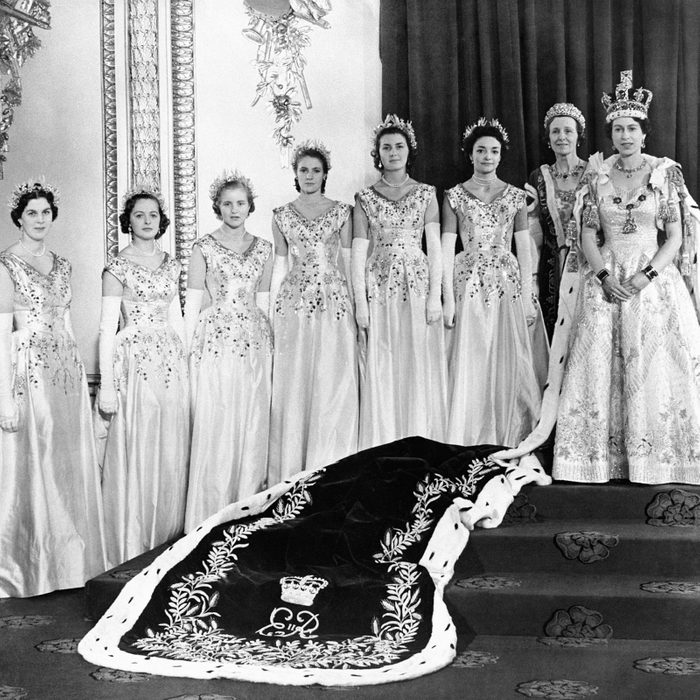
The coronation party
In this photo, taken post-coronation, Queen Elizabeth, wearing the Imperial State Crown, poses with her six Coronation Maids, as well as her Mistress of the Robes, Mary Cavendish Duchess of Devonshire (pictured closest to the queen but dressed differently and standing slightly behind the others). Except for the Mistress of the Robes, who was an employee of the royal family, all the queen’s coronation attendants were daughters of dukes, marquesses and earls, Koenig tells Reader’s Digest.
From left to right, we see: Lady Rosemary Muir (daughter of the 10th Duke of Marlborough), Lady Jane Rayne Lacey (daughter of the 8th Marquess of Londonderry), Lady Moyra Campbell (daughter of the 4th Duke of Abercorn), Lady Mary Russell (daughter of the 12th Earl of Haddington), Lady Jane Heathcote-Drummond-Willoughby (daughter of the 3rd Earl of Ancaster) and Lady Glenconner (daughter of the Earl of Leicester).
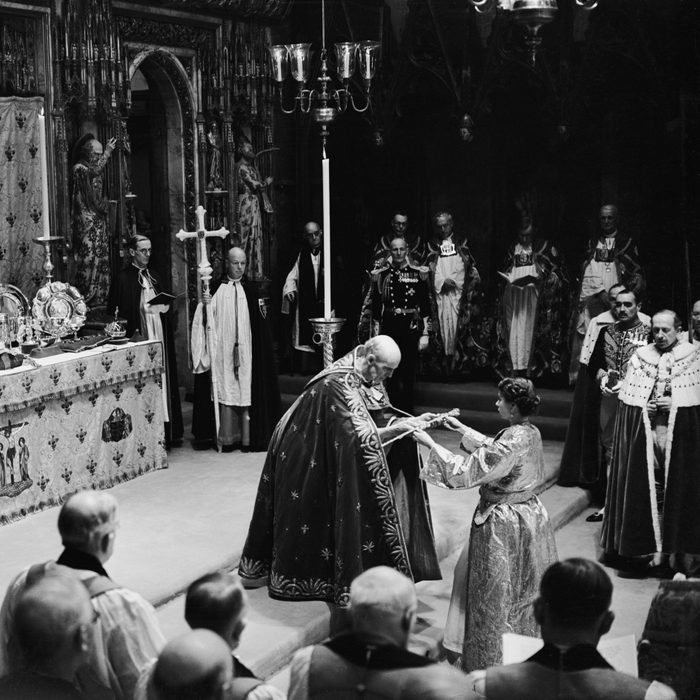
The Sword of Offering
The various crowns worn by the monarch during the coronation are selected from among the crown jewels, but other crown jewels are featured in the ceremony as well. That includes the Sword of Offering, shown here, which was designed for George IV’s coronation in 1821 and has been used at every coronation since Edward VII’s in 1902.
Per tradition, this gem-adorned sword is first blessed by the Archbishop of Canterbury (who leads the religious aspects of the coronation ceremony) and then delivered to the monarch as a symbolic gesture of protection. It is then offered by the monarch at the altar immediately prior to their crowning, which is what we’re witnessing in this image. King Charles will likely do the same immediately before receiving the St. Edward Crown.
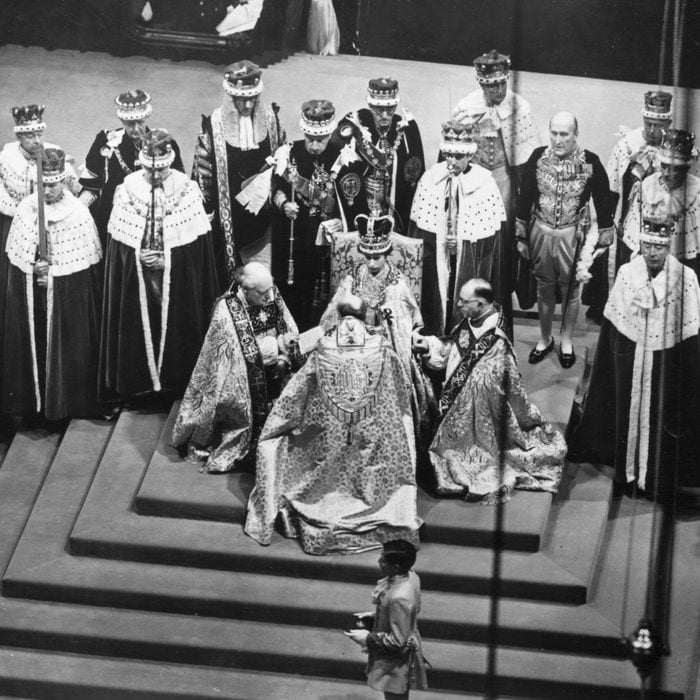
The bishops’ bow
Here, the Church of England’s bishops are shown bowing in deep reverence to the newly crowned queen, who sits on a throne commissioned for King Edward I in 1300. St. Edward’s Chair, as it’s called, has been used in every coronation since then, and we’ll most likely see it again on May 6.
According to Gullace, this photo highlights the deeply religious roots of coronation, which is always conducted by the Archbishop of Canterbury. Nevertheless, Queen Elizabeth also included the Moderator of the Church of Scotland in the proceedings. That was a first in history, and Charles will likely have a first of his own: Experts believe his coronation proceedings will include leaders from a variety of different faiths.
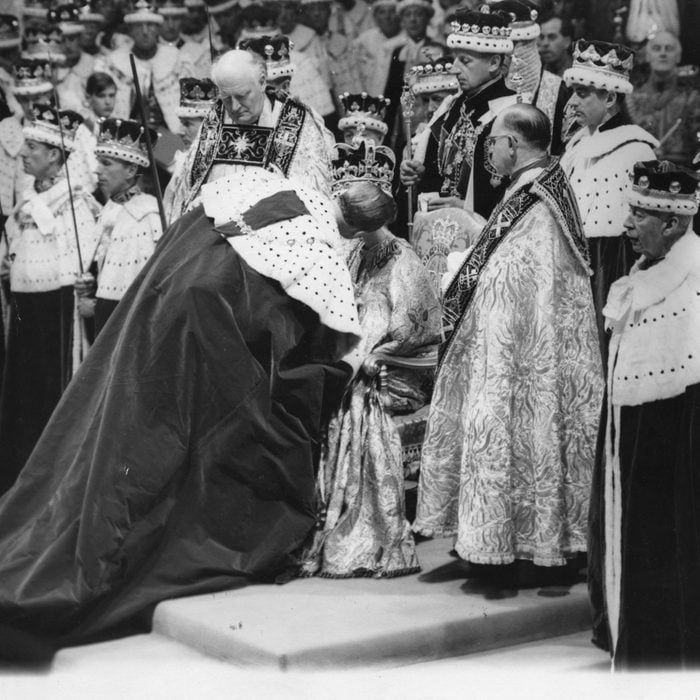
Prince Philip’s tribute to the queen
When a queen is crowned, her husband is there primarily to pay homage. Here, Prince Philip kneels before his newly crowned wife, kisses her cheek and pledges his obedience, Koenig tells Reader’s Digest. Other peers followed suit. At King Charles’s coronation, however, only Prince William is expected to pay homage—a choice that has the advantage of shifting the spotlight away from controversial family members such as Prince Andrew and Prince Harry.
As the wife of a reigning king, Queen Consort Camilla will have a different role at her spouse’s coronation. She too will be crowned, and Buckingham Palace has announced that the crown will be Queen Mary’s, designed and worn by the wife of Charles’s great-grandfather, King George V, whose coronation took place in 1911. It has been speculated that following the coronation, Camilla will be known as queen, rather than queen consort, in keeping with the late queen’s wishes.
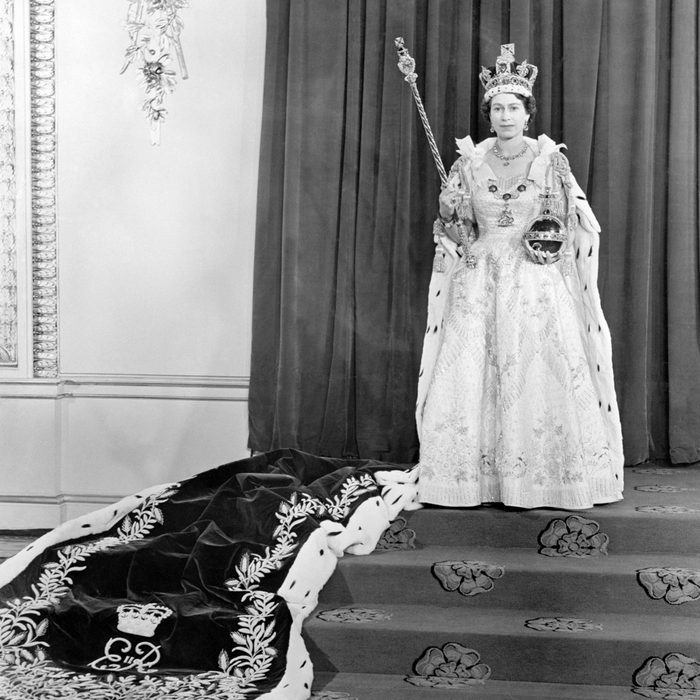
Symbols of the monarchy
During the coronation, various symbolic items are presented to the reigning monarch. These items, which display the monarchy’s tremendous wealth, also symbolize various aspects of sovereign power, notes Gullace. Here, Queen Elizabeth holds the Sovereign’s Orb and the Sovereign’s Sceptre with Cross. Both were created for Charles II in 1661, and both are expected to figure into King Charles III’s coronation.
The Orb is a hollow gold sphere (30 cm in diameter) adorned with hundreds of gemstones. Symbolizing the dominion of God, for which the monarch is seen as an Earthly representative, it’s placed in the monarch’s hands just before they receive the crown.
The Sceptre with Cross symbolizes the sovereign’s power over secular matters. (A different one, the monarch’s Dove Sceptre, symbolizes spiritual power.) Measuring 92 cm long, the Sceptre with Cross is set with the enormous Cullinan I diamond, which weighs in at a whopping 530.2 carats.
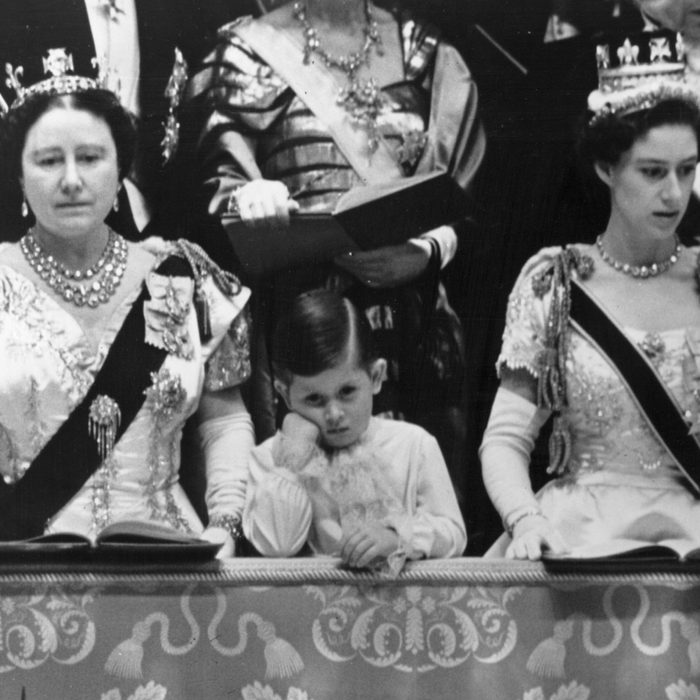
The future king, looking very bored
According to Koenig, the 4-year-old future king, Charles, received a “specially made invitation” to the coronation and was brought to the Abbey by his nurse, Helen Lightbody. Shown here standing rather sulkily between his grandmother, the Queen Mother, and his aunt, Princess Margaret, Charles didn’t even make it through the three-hour service. Princess Anne, the future Princess Royal, who was only 2, wasn’t present at Westminster but was seen later with the family on the Buckingham balcony.
Experts have speculated that Charles’s grandchildren are considered too young to play a role in the upcoming coronation. However, the future king George and his siblings, Charlotte and Louis, are expected to participate in the post-coronation processional back to Buckingham Palace. There’s no word yet on whether roles have been (or will be) created for Harry and Meghan’s children, the newly minted Prince Archie and Princess Lilibet of Sussex.
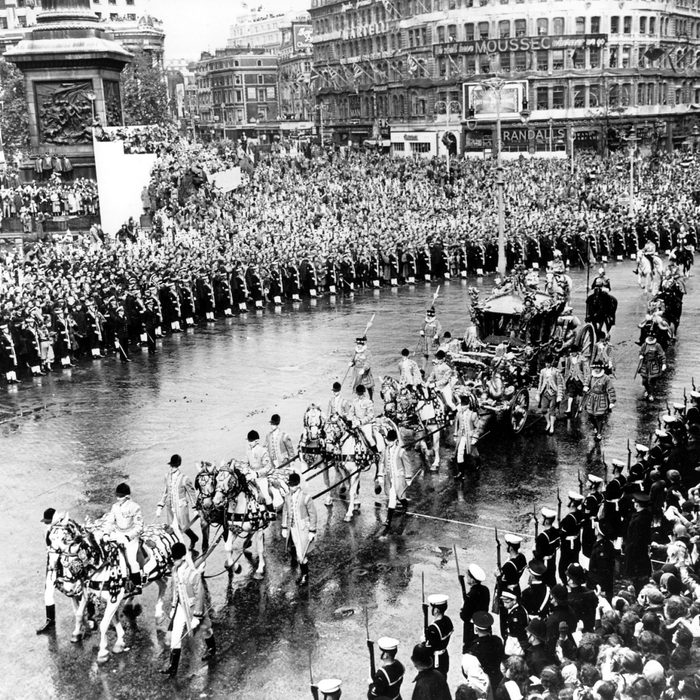
The post-coronation procession
Queen Elizabeth’s coronation took place at a time when many felt it appropriate and necessary for the royal family to put on an extraordinarily lavish coronation. And that it was, from the Gold State Coach to the 8,000 invited guests present at Westminster to the post-coronation procession to Buckingham Palace that was made up of around 250 individuals. This photo of said procession perfectly captures the “magnificence of the public spectacle,” Gullace notes.
On the other hand, the opulence on display did not resonate well with everyone. It may even have tarnished Queen Elizabeth’s legacy to some extent. Indeed, some still bristle about it to this day, along with the royal family’s astonishing net worth. Koenig says we can expect King Charles’s coronation to be far more understated, with a shorter program and smaller procession taking a shorter route through London.
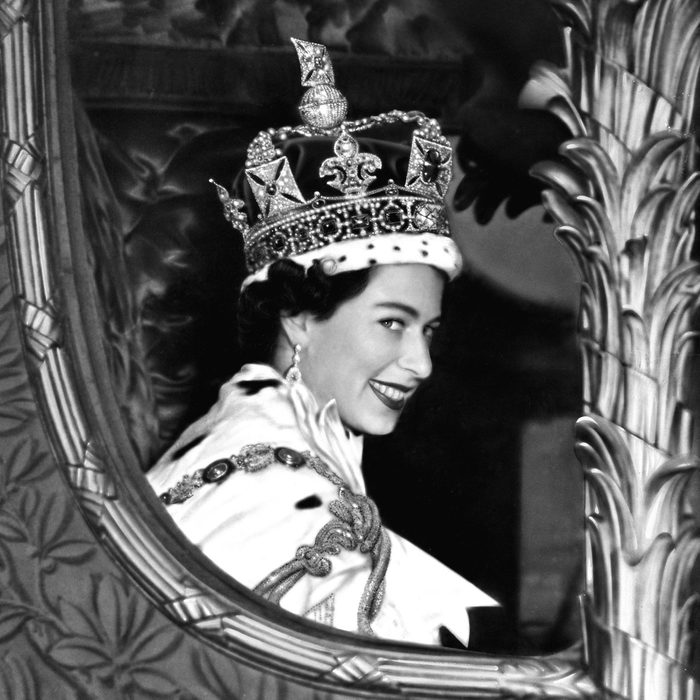
The queen’s return to Buckingham Palace
Looking radiant as she returns to Buckingham Palace after the coronation, the queen is wearing the Imperial State Crown and, although it’s not visible here, a ceremonial robe. Although the queen could have opted for the coronation robe worn by her father, the Imperial Robe, she chose to have one custom-made that was far more ornate. Twenty feet long and crafted with velvet and silk, Elizabeth’s “Robe of Estate” required 3,500 hours of work by 12 seamstresses selected from among the best at Britain’s Royal School of Needlework.
It’s possible King Charles III will, likewise, have his own custom ceremonial robe. However, since the new king has a more modest ethos, it’s more likely that he’ll go with the Imperial Robe worn by his grandfather.
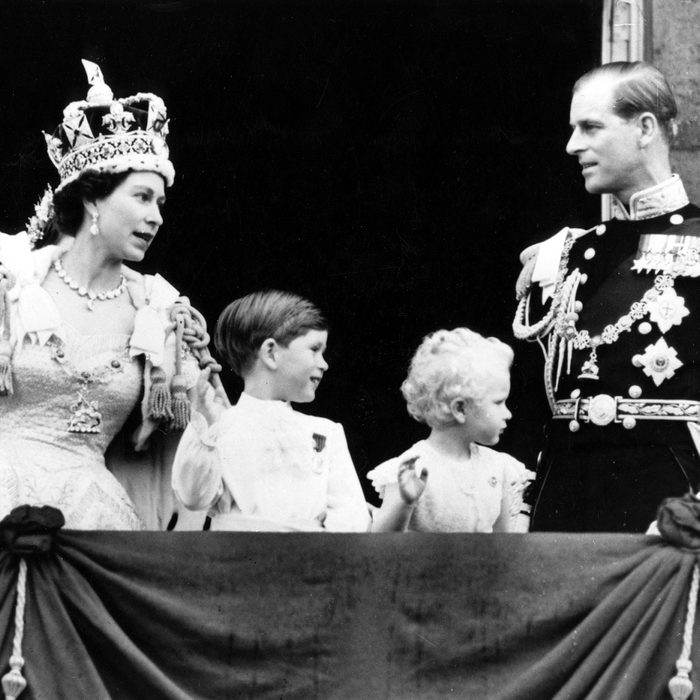
Just an ordinary family
Queen Elizabeth was a mother of young children, and that helped make her seem relatable, Gullace says. This photo of the queen, her husband and their two young children, taken post-coronation on Buckingham Palace’s balcony, brings that point home.
That sort of relatability may be a reach for King Charles, however, given that he ascended the throne at age 73. Moreover, his heir apparent is no longer a little boy, but rather, the middle-aged Prince William of Wales, who comes with his own heir apparent (plus two spares, not to mention his wife, the Princess of Wales, formerly known as Kate Middleton). If Prince George and his siblings are present on the Buckingham balcony on May 6, it should be an enormous crowd-pleaser, but it still may not resonate quite as much as this vision of a waving buck-toothed preschooler and his baby sister.
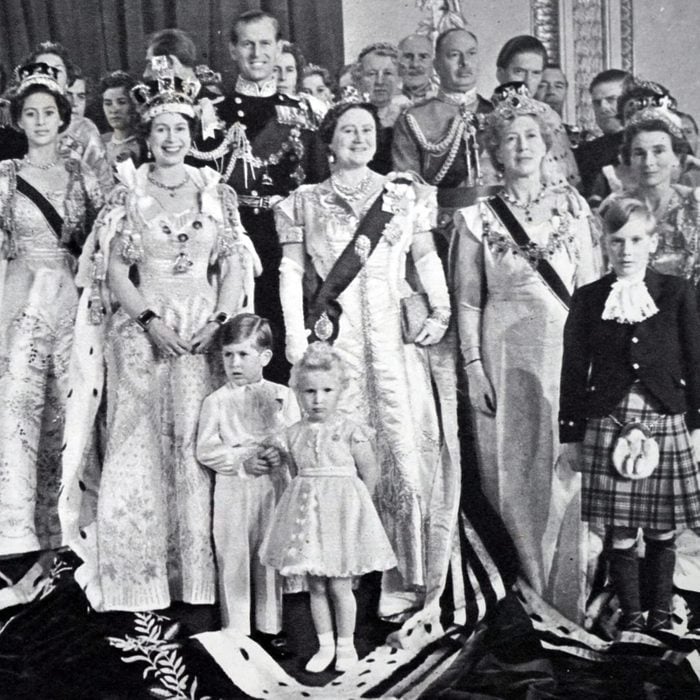
The grandchildren of Queen Victoria
Thanks to both the prolific baby-making of Queen Victoria and her consort, Prince Albert (they had nine children), and Queen Victoria’s successful royal matchmaking across Europe with regard to her children, the British royal family’s extended family is large. It also intersects with the royal families of numerous other European countries, including Spain, Denmark, Sweden and Norway.
This photo, which includes many members of the extended European royal family, emphasizes that point—and charmingly, at that. Gullace points out that Queen Elizabeth‘s “beaming smile made her a beloved icon” and “cherubic Charles and Princess Anne did much to humanize the early years of Elizabeth’s reign.”
Although most of the people in this photo are long gone, many of their descendants will be present at King Charles’s coronation. One can only hope that someone will think to assemble them for a then-and-now-type photo opportunity!
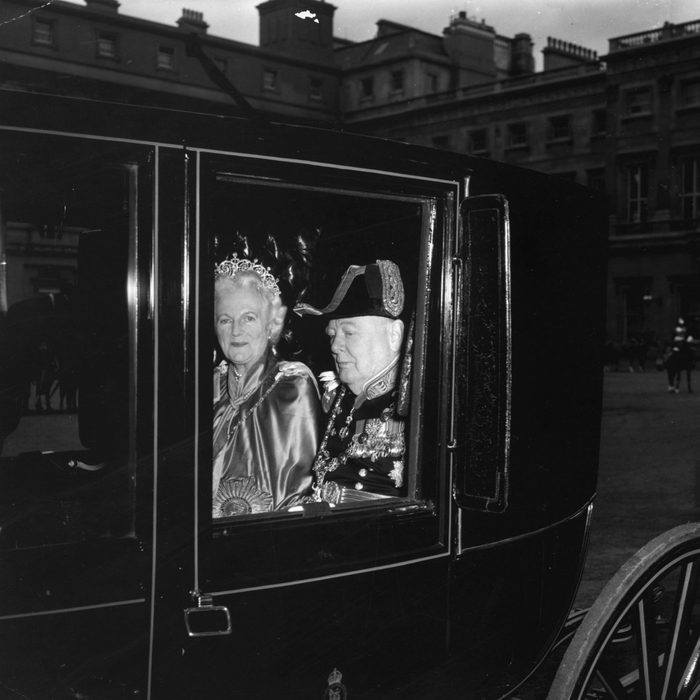
Winston Churchill arriving at Westminster
Some speculate the reason Queen Elizabeth’s coronation was delayed for nearly 16 months was that her first prime minister, Winston Churchill, used the delay as a means for extending his tenure as prime minister for as long as possible. (His political power was diminishing, but it would have been considered bad form for a prime minister to leave office during the period between the monarch’s accession and coronation.) But others maintain a several-month delay is customary out of respect for the deceased monarch, and the fact that the queen’s coronation was delayed for longer also reflects the extensive planning the opulent event required.
As for that opulence, Gullace notes that Churchill was instrumental in it, having made a campaign promise to make the British Empire great again. That included doing away with the restraint that characterized the World War II years. “The ceremony became a means by which to demonstrate Britain’s ancient glory and the thousand-year-old tradition of the monarchy,” Gullace tells Reader’s Digest.
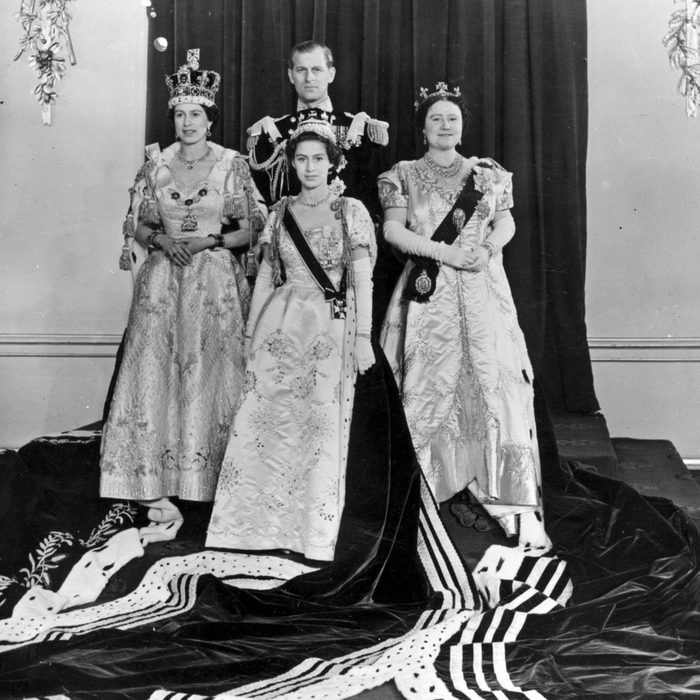
The absence of Queen Mary
Had Queen Elizabeth’s coronation happened sooner, this photo—of Prince Philip, Queen Elizabeth, the Queen Mother (Elizabeth’s mother and namesake) and Princess Margaret (Elizabeth’s sister)—might have included Queen Elizabeth’s grandmother, Queen Mary, the consort of King George V. But Mary, whose own coronation occurred along with her husband’s in 1911, died in March 1953 at the age of 81.
This might have pushed off Elizabeth’s coronation for even longer than 16 months, but Koenig says that Queen Mary, before her death, explicitly requested that Elizabeth’s coronation not be delayed because of this. As it was, Queen Mary was able to enjoy the distinction of being the first British queen to witness the accession of her grandchild to the throne.
Speaking of grandchildren, find out the important role Prince George will play in King Charles’s coronation.
Sources:
- Marlene Koenig, royal expert
- Nicolette Gullace, PhD, expert on the royal family and British historian at the University of New Hampshire
- Royal.uk: “50 facts about The Queen’s Coronation”
- Royal Collection Trust: “Coronations: An ancient ceremony”
- The Independent: “What will King Charles’ coronation outfit say about his reign?”
- Royal.uk: “The Crown Jewels”
- Royal Central: “The spectacular robe that King Charles will wear after his Coronation – the Robe of Estate”
